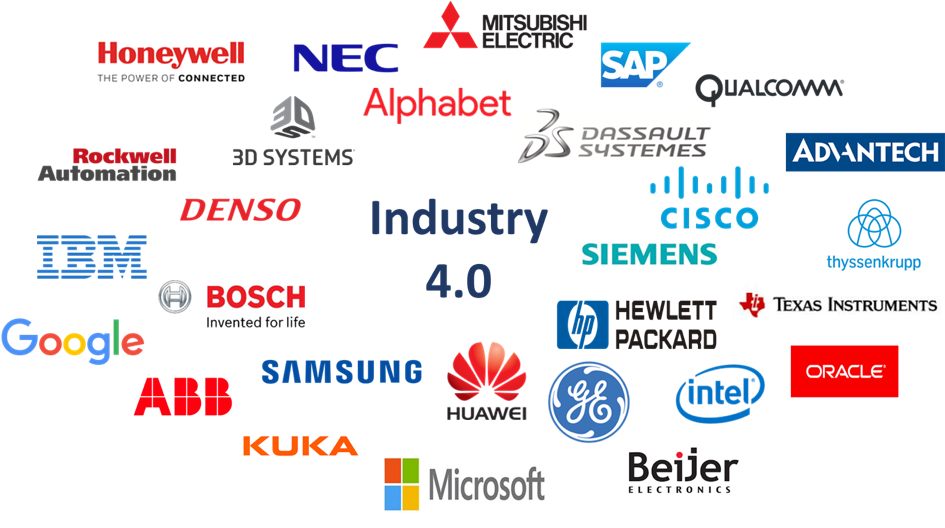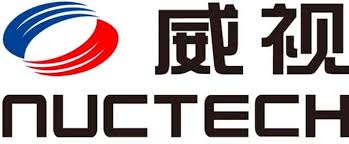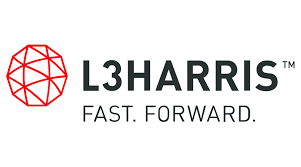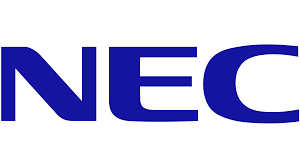Description

Figure 1 – Global Industry 4.0 Market [$B] – 2016 & 2023
|
The “Industry 4.0 Market by Industry (Aerospace & Defense, Agriculture, Food, Automotive, Chemical, Electronic & Electrical Hardware, Energy, Power, Oil & Gas, Machine Industry, Pharmaceutical & Biotechnology, Semiconductor and Other Industries) 2018-2023” report forecasts that the global Industry 4.0 market* will reach $214B by 2023. The Industry 4.0 transformation will change long-held dynamics in commerce and global economic balance of power.
Why buy this report?
1] No Risk. We Provide a Money Back Guarantee**
2] This report is based on thousands of sources.
The report research team:
- Reviewed and analyzed over 600 Industry 4.0 reports, papers, vendors and governmental information sources
- Participated in 16 round table Industry 4.0 focus groups
- Conducted 75 face-to-face interviews with industry executives
- Conducted a meta research including more than 4000 industry executives from more than 2,700 companies in 29 countries across 5 continents
- The report research team analyzed each dollar spent in the Industry 4.0 market via 5 bottom-up research vectors (see figure 3), thus providing a must have mega report for all decision makers in the Industry 4.0 market.
Some of the world technology giants (see figure 2) recognizing the huge business opportunities of the Industry 4.0, invested in R&D, commercialization of Industry 4.0 technologies and acquired smaller technology companies especially in the AI and big data sector. The Industry 4.0 market share race is already led by the global tech. giants (see figure 2). They already invested billions of dollars in Industry 4.0 products R&D, M&A and Commercialization.

Figure 2 – Leading Industry 4.0 Technology Corporations
The Industry 4.0 competition is not only about technology or offering the best products, but also, about the companies that gather the best data and combine them to offer the best digital services. Those who know what the customer wants and can forecast consumer demand, will provide the information to develop an unfair competitive advantage.
In the next decades, businesses will establish global networks that incorporate their machinery, warehousing systems and production facilities in the shape of Cyber-Physical Systems (CPS). In the manufacturing environment, these cyber-physical systems comprise smart machines, storage systems and production facilities capable of autonomously exchanging information, triggering actions and controlling each other independently. These changes add to the traditional business pressure on manufacturers, but also offer unprecedented opportunities to optimize production processes.

Figure 3 – Report Submarkets Granulation Vectors
This facilitates fundamental improvements to the industrial processes involved in manufacturing, engineering, material purchasing & usage, supply chain and life cycle management, predictive maintenance and real-time management overview. The smart factories that have already appeared across most industries employ a completely novel approach to production. Smart products are uniquely identifiable, they can be located at all times, know their own history, current status and alternative routes to achieving their target state. The embedded manufacturing systems are vertically networked with business processes within factories and enterprises and horizontally connected to dispersed value networks that can be managed in real time from the moment an order is placed right through to outbound logistics. In addition, they both enable and require end-to-end engineering across the entire value chain.
Industry 4.0 holds immense potential. Smart factories allow individual customer requirements to be met and mean that even one-off items can be manufactured profitably. In Industry 4.0, dynamic business and engineering processes enable last-minute changes to production and deliver the ability to respond flexibly to disruptions and failures on behalf of suppliers.
End-to-end transparency is provided over the manufacturing process, facilitating optimized decision-making. Industry 4.0 will also result in new ways of creating value and novel business models. It will provide start-ups and SMEs with the opportunity to develop and provide downstream services.
The major winners might be those that control Industry 4.0 platforms , software layers that syndicate various devices, information and services, on top of which other firms can build their own offerings.
The transformation of the economy being brought about by Industry 4.0 means that business processes such as supply, manufacturing, maintenance, delivery and customer service will all be connected via the Industrial IoT systems. These extremely flexible value networks will require new forms of collaboration between companies, both nationally and globally.
Governments and the private sector of countries with high labor costs (e.g., EU countries and the U.S.A.) invest in Industry 4.0 to increase their industrial base which has been taken over by low labor cost countries (see figure below). Low labor costs industries and their governments (e.g., China, India and Cambodia) are reacting to this trend by investing in Industry 4.0 as well. To maintain their industrial base, governments across the globe, fund Industry 4.0 projects, R&D, provide subsidies and tax incentives to Industry 4.0 investors.

Figure 4 – Manufacturing Sector Share [%] of GDP by Key Countries
In 2018-2023, the market will undergo a major transformation through the following drivers:
- Global competition in the manufacturing sector is becoming fiercer and fiercer
- The Nokia syndrome challenge, (by 2007 Nokia smartphone market share was 52%. Nokia’s management didn’t react to the 2007 launch of the iPhone, leading Nokia to a catastrophic fall in their market share to 2% by 2012).
- When Industry 4.0 knocks on your door, open it or perish
- Unprecedented opportunities to optimize production processes
- Governments and the private sector of high labor costs economies invest in Industry 4.0 to increase their industrial base taken by low labor cost countries
- Governments of low labor costs economies invest in Industry 4.0 to maintain their industrial base taken by high labor cost countries Industry 4.0 investments
- Government-funded Industry 4.0 projects, R&D, subsidies and tax incentives
- Industry 4.0 offers start-ups and SMEs the opportunity to develop and provide downstream services
- Industry 4.0 dynamic business and engineering processes enable last-minute changes to production and deliver the ability to respond flexibly to disruptions and failures on behalf of suppliers and customers
- Industry 4.0 provides the link to the consumer, and can forecast consumer demand
The “Industry 4.0 Market by Industry (Aerospace & Defense, Agriculture, Food, Automotive, Chemical, Electronic & Electrical Hardware, Energy, Power, Oil & Gas, Machine Industry, Pharmaceutical & Biotechnology, Semiconductor and Other Industries) 2018-2023” report is the most comprehensive review of this emerging market available today. It provides a detailed and reasoned roadmap of this rapidly growing market.
The report analyzes each dollar spent in the Industry 4.0 market via 5 bottom-up research vectors (see figure 3), thus providing a must-have mega report for all decision-makers in the Industry 4.0 market.
The report is aimed at:
- Industry 4.0 products vendors
- Industry 4.0 systems integrators
- Government industry agencies
- Manufacturing companies, SME included
The report has been explicitly customized for the industry and government decision-makers to enable them to identify business opportunities, emerging technologies, market trends and risks, as well as to benchmark business plans.
Questions answered in this 545-page market report include:
- What was the 138 submarkets size and what were the trends during 2016 & 2017?
- What is the 2018-2023 forecast for each of the 138 submarkets?
- Which industries and technologies provide attractive business opportunities?
- What drives the Industry 4.0 managers to purchase solutions and services?
- What are the technology & services trends?
- What are the market SWOT (Strengths, Weaknesses, Opportunities and Threats)?
With 545 pages, 98 tables and 115 figures, this 4-volume report covers 10 industries, 4 revenue sources, 5 regional and 22 national markets, offering for each of them 2016-2017 estimates and 2018-2023 forecasts and analyses.
Why Buy This Report?
A. This is the most comprehensive information source of the global Industry 4.0 market and technologies.
B. Market data is analyzed via 4 key perspectives:
With a highly fragmented Industry 4.0 market we address the money trail via the following 4 bottom-up market size vectors:
- Aerospace I4.0
- Defense I4.0
- Agriculture I4.0
- Food I4.0
- Automotive I4.0
- Chemical I4.0
- Electronic Hardware I4.0
- Electrical Hardware I4.0
|
- Energy, Power I4.0
- Oil & Gas I4.0
- Machine Industry I4.0
- Pharmaceutical I4.0
- Biotechnology I4.0
- Semiconductors I4.0
- Other I4.0 Industries
|
- By 4 Revenue Sources:
- Product Sales
- System Installation, Integration & Commissioning
- Aftersale Maintenance, Upgrades & Spare Parts
- Consulting, Planning & Training
-
- North America
- Latin America
- Europe
- Middle East and Africa
- Asia-Pacific
- U.S.
- Canada
- Mexico
- Brazil
- Rest of LATAM
- UK
- Germany
- France
- Italy
- Spain
- Scandinavia
|
- Rest of Europe
- Turkey
- Israel
- GCC
- South Africa
- Rest of MEA
- India
- China
- Japan
- South Korea
- Rest of APAC
|
C. Detailed market analysis framework is provided:
- Market drivers & inhibitors
- Business opportunities
- SWOT analysis
- Barriers to new entry, supplier power, buyer power and competitive rivalry
- Business environment
- The 2016-2023 market segmented by 212 submarkets
- More than 1000 references and links to Industry 4.0 data sources & publications
D. The report includes the following appendices:
- Appendix A: Industry 4.0 Smart Maintenance
- Appendix B: How to Convert an Industry 2.0 or Industry 3.0 Business to Industry 4.0
- Appendix C: Abbreviations
- Appendix D: Terminology
- Appendix E: Research Sources & Bibliography
E. The report presents extensive information on 49 leading companies (including companies profile, Industry 4.0 activities & products, and recent events), namely:
3D Systems
ABB Ltd.
Advantech
Aibrain
Alphabet
Arcadia Data
Arm Ltd.
Beijer Electronics
Bosch
Cisco
CyberX
Dassault Syst?mes
DENSO
EOS
ExOne
General Electric
Honeywell |
Hewlett Packard
Huawei
IBM
Intel
Intelligent Automation
Interset Software
Kuka
Magic Leap
Microsoft
Mitsubishi Electric
NEC
NGRAIN
Oculus VR
Oracle
QUALCOMM
Rethink Robotics
Rockwell Automation |
Samsung
SAP
Sensory
Siemens
SIGFOX
Splunk
Sri International
Stratasys
Texas Instruments
TRUMPF
u-blox
Wittenstein
Worldsensing SL
Xerafy
Xjet |
NOTES:
(*) “Market” Definition. Industry 4.0 turnkey systems sale, aftersales maintenance & upgrades and outsourced services such as consulting, planning & training
(**) Industry 4.0 Report “Money-Back Guarantee” Program: Terms & Conditions
- To qualify for the money-back guarantee program send an email with your contact information to: sales@homelandsecurityresearch.com
- HSRC will inform the customer of his/her eligibility for the program ASAP.
- Qualified customers are required to pay the full list price of the report, and a copy of the report will be dispatched to them ASAP.
- Customers wishing to implement the money-back-guarantee policy, must notify HSRC via e-mail (sales@homelandsecurityresearch.com), within 48 hours of receipt of the report that they request a refund. The customer will have to erase and destroy any copy of the report and inform sales@homelandsecurityresearch.com that it has been done.
- The customer has 48 hours of receipt of the report to fully comply with Clause (4).
- HSRC would appreciate receiving customer’s honest review of the report and the reason(s) it didn’t meet his/her needs/expectations.
- Upon receipt of the e-mail as detailed in Clause (4), HSRC will issue within 3 working days a refund instruction (minus $300 for shipping and handling).
- HSRC reserves the right to decide that a company doesn’t qualify for this promotion at HSRC’s own discretion
(***) The Meta-Research is based on the statistics of 11 Industry 4.0 surveys conducted by HSRC, BCG, PwC, Deloitte, Roland Berger, Rittal, Siemens and The Economist Intelligence Unit, totaling >4000 responders.
Table of Contents
Download TOC as PDF
4 Volumes:
Industry 4.0 Market by Industry – 2018 – 2023 – Volume 1
Industry 4.0 Market by Industry – 2018 – 2023 – Volume 2
Industry 4.0 Market by Industry – 2018 – 2023 – Volume 3
Industry 4.0 Market by Industry – 2018 – 2023 – Volume 4
Industry 4.0 Market by Industry – 2018 – 2023 – Volume 1
| 1 |
Executive Summary |
| 1.1 |
Industry 4.0 Definition |
| 1.2 |
Fourth Industrial Revolution – Industry 4.0 Evolution |
| 1.3 |
Key Findings |
| 1.4 |
Key Market Drivers |
| 1.5 |
Industry 4.0 Key Challenges |
| 1.6 |
Major Conclusions |
| 1.7 |
Industry 4.0 Eco-System |
| 1.8 |
Industry 4.0 Client CEO Takeaway |
| 1.9 |
Recommendations for Industry 4.0 Vendors |
| 1.1 |
Industry 4.0 Market Research Vectors |
| 1.11 |
Global Industry 4.0 Market Size – 2016-2023 |
| 1.11.1 |
Global Industry 4.0 Market Size by Industry – 2016-2023 |
| 1.11.2 |
Global Industry 4.0 Market Size by Technology – 2016-2023 |
| 1.11.3 |
Global Industry 4.0 Market Size by Revenue Source -2016-2023 |
| 1.11.4 |
Industry 4.0 Market Size by Region – 2016-2023 |
| 1.11.5 |
Industry 4.0 Market Size by Country – 2016-2023 |
| 2 |
Industry 4.0 Market Background |
| 2.1 |
Industry 4.0 Market: Introduction |
| 2.2 |
Industry 3.0 Factory Vs. Industry 4.0 Factory |
| 2.3 |
Industry 4.0 Ecosystem and Outlook |
| 2.4 |
Industry 4.0 Design Principles |
| 2.5 |
Industry 4.0 Technologies, Architecture and Supply Chain Intra-Relationship |
| 2.6 |
Manufacturers Industry 4.0 Introduction Strategies |
| 2.7 |
Cobots |
| 2.8 |
In-memory Computing |
| 2.9 |
Edge Computing |
| 2.1 |
Industry Cyber-Physical Systems (CPS) |
| 2.11 |
Industry 4.0 Mega Trends |
| 2.12 |
Predictive Maintenance 4.0 |
| 2.13 |
Smart Factories |
| 2.14 |
Society 4.0 |
| 2.15 |
Customized Manufacturing 4.0 |
| 2.16 |
Industry 4.0: Value Chain |
| 2.17 |
Logistics 4.0 & Smart Supply Chain 4.0 Management |
| 2.18 |
Value of Industry 4.0 Partnerships |
| 2.19 |
Industry 4.0 & Smart Manufacturing: Operational-Technology & Information Technology Convergence |
| 2.2 |
Industry 4.0 Lifecycle Management |
| 2.21 |
Industry 4.0 Vertical Integration |
| 2.22 |
Industry 4.0: Effects on the Private Sector |
| 2.23 |
Industry 4.0: Effects on Governments |
| 2.24 |
How to Introduce Industry 4.0: The Fourth Industrial Revolution Intelligence Concept (4IRI) |
| 2.25 |
Industry 4.0 Challenges |
| 2.26 |
Industry 4.0 Risks |
| 3 |
Industry 4.0 Market Drivers |
| 4 |
Industry 4.0 Market Inhibitors |
| 5 |
Industry 4.0 SWOT Analysis |
| 5.1 |
Strengths |
| 5.2 |
Weaknesses |
| 5.3 |
Opportunities |
| 5.4 |
Threats |
| 6 |
Barriers to New Entry, Supplier Power, Buyer Power and Competitive Rivalry |
| 7 |
Business Opportunities |
| 7.1 |
Industrie 4.0 is Both Good and Bad News For Suppliers |
| 7.2 |
Industry 4.0 Business Opportunities |
| 7.2.1 |
Platforms |
| 7.2.2 |
Licensed IP: |
| 7.2.3 |
Pay-By-Use and Subscription Based Services: |
| |
|
| |
GLOBAL INDUSTRY 4.0 MARKET |
| 8 |
Global Industry 4.0 Market by Industry – 2016-2023 |
| 8.1.1 |
Global Industry 4.0 Industry 4.0 Market Size 2016-2023 |
| 8.1.2 |
Global Industry 4.0 Market Breakdown 2016-2023 |
| 9 |
Aerospace & Defense 4.0 Market – 2016-2023 |
| 9.1 |
Defense Industry 4.0 Market Background |
| 9.2 |
U.S. Defense Scenario |
| 9.3 |
Aerospace Industry 4.0 Market Background |
| 9.4 |
Aerospace & Defense Industry 4.0 Market Size 2016-2023 |
| 9.4.1 |
Industry 4.0 Aerospace & Defense Market Size 2016-2023 |
| 9.4.2 |
Aerospace & Defense Industry 4.0: Market Dynamics 2016-2023 |
| 9.4.3 |
Aerospace & Defense Industry 4.0: Market Breakdown 2016-2023 |
| 10 |
Agriculture & Food Industries 4.0 Market – 2016-2023 |
| 10.1 |
Agriculture 4.0 Market Background |
| 10.1.1 |
Introduction |
| 10.1.2 |
Agriculture 4.0 Scope |
| 10.1.3 |
Agriculture 4.0 Farm Machinery |
| 10.1.4 |
The Added Value for Customers & Farmers |
| 10.1.5 |
Agriculture 4.0 Conclusions |
| 10.2 |
Global Agriculture & Food Industry 4.0 Market 2016-2023 |
| 10.2.1 |
Industry 4.0 Agriculture & Food Market Size 2016-2023 |
| 10.2.2 |
Agriculture & Food Industry 4.0: Market Dynamics 2016-2023 |
| 10.2.3 |
Agriculture & Food Industry 4.0: Market Breakdown 2016-2023 |
| 11 |
Automotive Industry Market – 2016-2023 |
| 11.1 |
Industry 4.0 Automotive Industry Market Background |
| 11.2 |
Industry 4.0 on the Automotive Industry: Major Trends |
| 11.2.1 |
Automotive Industry Cloud Computing |
| 11.2.2 |
Automotive Industry Cybersecurity |
| 11.2.3 |
Automotive Industry Big Data Analytics |
| 11.2.4 |
Automotive Industry Internet of Cars |
| 11.2.5 |
Automotive Industry: Opportunities |
| 11.3 |
Automotive Industry 4.0 Market Drivers |
| 11.4 |
Automotive Industry 4.0 Market: Key Challenges |
| 11.5 |
Autonomous Cars 4.0 |
| 11.6 |
Automotive Industry 4.0: Internet of Things |
| 11.7 |
Automotive Industry 4.0: Machine-Learning |
| 11.8 |
Automotive Industry 4.0: Cloud-based Intelligence |
| 11.9 |
Customized Car Manufacturing 4.0 |
| 11.1 |
Automotive Industry 4.0 Example: BMW |
| 11.11 |
Global Automotive Industry 4.0 Market 2016-2023 |
| 11.11.1 |
Industry 4.0 Automotive Market Size 2016-2023 |
| 11.11.2 |
Automotive Industry 4.0: Market Dynamics 2016-2023 |
| 11.11.3 |
Automotive Industry 4.0: Market Breakdown 2016-2023 |
| 12 |
Chemical Industry 4.0 Market – 2016-2023 |
| 12.1 |
Chemical Industry 4.0 Market Background |
| 12.1.1 |
The Global Chemical Industry |
| 12.1.2 |
Chemical Industry 4.0 Market |
| 12.1.3 |
Industry 4.0 Transformations in the Chemical Industry |
| 12.2 |
Global Chemical Industry 4.0 Market 2016-2023 |
| 12.2.1 |
Industry 4.0 Chemical Market Size 2016-2023 |
| 12.2.2 |
Chemical Industry 4.0: Market Dynamics 2016-2023 |
| 12.2.3 |
Chemical Industry 4.0: Market Breakdown 2016-2023 |
| 13 |
Electronic & Electrical Hardware Industries 4.0 Market – 2016-2023 |
| 13.1 |
Electronic & Electrical Hardware: Industry 4.0 Market Background |
| 13.2 |
Global Electronic & Electrical Hardware Industry 4.0 Market 2016-2023 |
| 13.2.1 |
Industry 4.0 Electronic & Electrical Hardware Market Size 2016-2023 |
| 13.2.2 |
Electronic & Electrical Hardware Industry 4.0: Market Dynamics 2016-2023 |
| 13.2.3 |
Electronic & Electrical Hardware Industry 4.0: Market Breakdown 2016-2023 |
| 14 |
Energy, Power, Oil & Gas 4.0 Market – 2016-2023 |
| 14.1 |
Industry 4.0 Energy, Power, Oil & Gas Market Background |
| 14.1.1 |
Energy, Power, Oil & Gas Industry Trends |
| 14.1.2 |
The Oil & Gas Industry |
| 14.1.3 |
Industry 4.0 Oil & Gas Sector Environmental Perspective |
| 14.1.4 |
Industry 4.0 Undersea Oil & Gas Challenge |
| 14.1.5 |
Oil & Gas Big Data |
| 14.1.6 |
Oil & Gas Industry 4.0 Outlook |
| 14.1.7 |
Industry 4.0 Energy and Power Market Background |
| 14.2 |
Industry 4.0 & Industrial IoT Energy Productivity |
| 14.2.1 |
Introduction |
| 14.2.2 |
Energy and Power Industry 4.0 Remote Monitoring |
| 14.2.3 |
Predictive Maintenance |
| 14.2.4 |
Energy and Power Industry 4.0 Advanced Control |
| 14.3 |
Energy, Power, Oil & Gas Industry 4.0 Market 2016-2023 |
| 14.3.1 |
Industry 4.0 Energy, Power, Oil & Gas Market Size 2016-2023 |
| 14.3.2 |
Energy, Power, Oil & Gas Industry 4.0: Market Dynamics 2016-2023 |
| 14.3.3 |
Energy, Power, Oil & Gas Industry 4.0: Market Breakdown 2016-2023 |
| 15 |
Machine Manufacturing 4.0 Market – 2016-2023 |
| 15.1 |
Machine Manufacturing Industry 4.0 Market Background |
| 15.1.1 |
The Machine Manufacturing Industry |
| 15.1.2 |
Machine Manufacturing Industry 4.0 Market |
| 15.2 |
Machine Manufacturing Industry 4.0 Market 2016-2023 |
| 15.2.1 |
Industry 4.0 Machine Market Size 2016-2023 |
| 15.2.2 |
Machine Industry 4.0: Market Dynamics 2016-2023 |
| 15.2.3 |
Machine Industry 4.0: Market Breakdown 2016-2023 |
| 16 |
Pharmaceutical & Biotechnology 4.0 Market – 2016-2023 |
| 16.1 |
Pharmaceutical & Biotechnology Industry 4.0 Market Background |
| 16.2 |
Global Pharmaceutical & Biotechnology Industry 4.0 Market 2016-2023 |
| 16.2.1 |
Industry 4.0 Pharmaceutical & Biotechnology Market Size 2016-2023 |
| 16.2.2 |
Pharmaceutical & Biotechnology Industry 4.0: Market Dynamics 2016-2023 |
| 16.2.3 |
Pharmaceutical & Biotechnology Industry 4.0: Market Breakdown 2016-2023 |
| 17 |
Semiconductors 4.0 Market – 2016-2023 |
| 17.1 |
Semiconductor Market Background |
| 17.1.1 |
Industry 4.0 Semiconductors |
| 17.1.2 |
Semiconductor Manufacturing Horizontal Integration |
| 17.1.3 |
Semiconductor Industry 4.0: Customization Considerations |
| 17.1.4 |
Industry 4.0 Semiconductor Manufacturing Market |
| 17.1.5 |
Conclusions |
| 17.2 |
Industry 4.0 Semiconductors Market 2016-2023 |
| 17.2.1 |
Industry 4.0 Semiconductors Market Size 2016-2023 |
| 17.2.2 |
Semiconductors Industry 4.0: Market Dynamics 2016-2023 |
| 17.2.3 |
Semiconductors Industry 4.0: Market Breakdown 2016-2023 |
| 18 |
Other Industry 4.0 Markets – 2016-2023 |
| 18.1 |
Other 4.0 Industry Markets Size 2016-2023 |
| 18.2 |
Other Industries 4.0: Market Dynamics 2016-2023 |
| 18.3 |
Other Industries 4.0: Market Breakdown 2016-2023 |
[Back to top]
Industry 4.0 Market by Industry – 2018 – 2023 – Volume 2
| |
REGIONAL MARKETS |
| 1 |
North America Industry 4.0 Industry 4.0 Market 2016-2023 |
| 1.1 |
North America Industry 4.0 Market by Industry |
| 1.1.1 |
North America Industry 4.0 Market Size 2016-2023 |
| 1.1.2 |
North America Industry 4.0 Market Breakdown 2016-2023 |
| 1.2 |
North America Industry 4.0 Market by Revenue Source |
| 1.2.1 |
North America Industry 4.0 Market 2016-2023 |
| 1.2.2 |
Industry 4.0 Market Breakdown 2016-2023 |
| 2 |
Latin America Industry 4.0 Industry 4.0 Market 2016-2023 |
| 2.1 |
Latin America Industry 4.0 Market by Industry |
| 2.1.1 |
Latin America Industry 4.0 Market Size 2016-2023 |
| 2.1.2 |
Latin America Industry 4.0 Market Breakdown 2016-2023 |
| 2.2 |
Latin America Industry 4.0 Market by Revenue Source |
| 2.2.1 |
Latin America Industry 4.0 Market 2016-2023 |
| 2.2.2 |
Industry 4.0 Market Breakdown 2016-2023 |
| 3 |
Europe Industry 4.0 Industry 4.0 Market 2016-2023 |
| 3.1 |
The European Industry 4.0 Market Background |
| 3.1.1 |
The EU Industry 4.0 Strengths |
| 3.1.2 |
EU Funding Sources |
| 3.1.3 |
National Industry 4.0 policies |
| 3.2 |
Europe Industry 4.0 Market by Industry |
| 3.2.1 |
Europe Industry 4.0 Market Size 2016-2023 |
| 3.2.2 |
Europe Industry 4.0 Market Breakdown 2016-2023 |
| 3.3 |
Europe Industry 4.0 Market by Revenue Source |
| 3.3.1 |
Europe Industry 4.0 Market 2016-2023 |
| 3.3.2 |
Industry 4.0 Market Breakdown 2016-2023 |
| 4 |
Middle East and Africa Industry 4.0 Industry 4.0 Market 2016-2023 |
| 4.1 |
Middle East and Africa Industry 4.0 Market by Industry |
| 4.1.1 |
Middle East and Africa Industry 4.0 Market Size 2016-2023 |
| 4.1.2 |
Middle East and Africa Industry 4.0 Market Breakdown 2016-2023 |
| 4.2 |
Middle East and Africa Industry 4.0 Market by Revenue Source |
| 4.2.1 |
Middle East and Africa Industry 4.0 Market 2016-2023 |
| 4.2.2 |
Industry 4.0 Market Breakdown 2016-2023 |
| 5 |
Asia-Pacific Industry 4.0 Industry 4.0 Market 2016-2023 |
| 5.1 |
Asia-Pacific Industry 4.0 Market by Industry |
| 5.1.1 |
Asia-Pacific Industry 4.0 Market Size 2016-2023 |
| 5.1.2 |
Asia-Pacific Industry 4.0 Market Breakdown 2016-2023 |
| 5.2 |
Asia-Pacific Industry 4.0 Market by Revenue Source |
| 5.2.1 |
Asia-Pacific Industry 4.0 Market 2016-2023 |
| 5.2.2 |
Industry 4.0 Market Breakdown 2016-2023 |
[Back to top]
Industry 4.0 Market by Industry – 2018 – 2023 – Volume 3
| |
NATIONAL MARKETS |
| 1 |
United States Industry 4.0 Market 2016-2023 |
| 1.1 |
Facts & Figures |
| 1.2 |
U.S. Industry 4.0 Market Background |
| 1.2.1 |
Manufacturing in the United States |
| 1.2.2 |
Smart Factory 2011-2015 |
| 1.2.3 |
U.S. Smart Factory 2011-2015 Projects |
| 1.2.3.1 |
Smart Manufacturing Projects |
| 1.2.3.2 |
U.S. Automotive Smart Manufacturing Projects |
| 1.2.3.3 |
Traditional Smart Manufacturing Projects |
| 1.2.3.4 |
Smart Service Projects |
| 1.2.4 |
United States Industry 4.0 Initiatives |
| 1.2.4.1 |
Overview |
| 1.2.4.2 |
The U.S. National Network for Manufacturing Innovation (NNMI) |
| 1.2.4.3 |
Other U.S. Industry 4.0 Market Initiatives |
| 1.2.5 |
Manufacturing Extension Partnership (MEP) |
| 1.3 |
United States Industry 4.0 Market |
| 1.3.1 |
U.S. Market Size by Revenue Source 2016-2023 |
| 1.3.2 |
U.S. Industry 4.0 Market Dynamics 2016-2023 |
| 1.3.3 |
U.S. Industry 4.0 Market Breakdown 2016-2023 |
| 2 |
Canada Industry 4.0 Market 2016-2023 |
| 2.1 |
Facts & Figures |
| 2.2 |
Canada Industry 4.0 Market Background |
| 2.3 |
Industry 4.0 Links |
| 2.4 |
Canada Industry 4.0 Market |
| 2.4.1 |
Canada Market Size by Revenue Source 2016-2023 |
| 2.4.2 |
Canada Industry 4.0 Market Dynamics 2016-2023 |
| 2.4.3 |
Canada Industry 4.0 Market Breakdown 2016-2023 |
| 3 |
Mexico Industry 4.0 Market 2016-2023 |
| 3.1 |
Facts & Figures |
| 3.2 |
Mexico Industry 4.0 Market Background |
| 3.3 |
Industry 4.0 Links |
| 3.4 |
Mexico Industry 4.0 Market |
| 3.4.1 |
Mexico Market Size by Revenue Source 2016-2023 |
| 3.4.2 |
Mexico Industry 4.0 Market Dynamics 2016-2023 |
| 3.4.3 |
Mexico Industry 4.0 Market Breakdown 2016-2023 |
| 4 |
Brazil Industry 4.0 Market 2016-2023 |
| 4.1 |
Facts & Figures |
| 4.2 |
Brazil Industry 4.0 Market Background |
| 4.3 |
Industry 4.0 Links |
| 4.4 |
Brazil Industry 4.0 Market |
| 4.4.1 |
Brazil Market Size by Revenue Source 2016-2023 |
| 4.4.2 |
Brazil Industry 4.0 Market Dynamics 2016-2023 |
| 4.4.3 |
Brazil Industry 4.0 Market Breakdown 2016-2023 |
| 5 |
Rest of Latin America Industry 4.0 Market 2016-2023 |
| 5.1 |
Rest of Latin America Market Size by Revenue Source 2016-2023 |
| 5.2 |
Rest of Latin America Industry 4.0 Market Dynamics 2016-2023 |
| 5.3 |
Rest of Latin America Industry 4.0 Market Breakdown 2016-2023 |
| 6 |
UK Industry 4.0 Market 2016-2023 |
| 6.1 |
Facts & Figures |
| 6.2 |
The UK Government Industry 4.0 Policy |
| 6.2.1 |
Introduction |
| 6.2.2 |
Recommendations |
| 6.3 |
UK Industry 4.0 Market Background |
| 6.4 |
Example: UK Industry 4.0 Vehicle Manufacturing Sector |
| 6.5 |
Industry 4.0 Links |
| 6.6 |
UK Industry 4.0 Market |
| 6.6.1 |
UK Market Size by Revenue Source 2016-2023 |
| 6.6.2 |
UK Industry 4.0 Market Dynamics 2016-2023 |
| 6.6.3 |
UK Industry 4.0 Market Breakdown 2016-2023 |
| 7 |
Germany Industry 4.0 Market 2016-2023 |
| 7.1 |
Facts & Figures |
| 7.2 |
Germany Industrie 4.0 Market Background |
| 7.2.1 |
Market Background |
| 7.2.2 |
German Government and Fraunhofer Industrie 4.0 Projects |
| 7.2.3 |
Germany, France and Italy Industry 4.0 Collaboration |
| 7.2.4 |
General Dos & Don’ts for Industry 4.0 Vendors in Germany |
| 7.2.5 |
The German Industrie 4.0 Transformation Strategy |
| 7.3 |
German Industry 4.0 Links |
| 7.4 |
Germany Industrie 4.0 Market |
| 7.4.1 |
Germany Market Size by Revenue Source 2016-2023 |
| 7.4.2 |
Germany Industrie 4.0 Market Dynamics 2016-2023 |
| 7.4.3 |
Germany Industrie 4.0 Market Breakdown 2016-2023 |
| 8 |
France Industry 4.0 Market 2016-2023 |
| 8.1 |
Facts & Figures |
| 8.2 |
France Industry 4.0 Market Background |
| 8.3 |
The Industrie du Futur Alliance |
| 8.4 |
Industry 4.0 Links |
| 8.5 |
France Industry 4.0 Market |
| 8.5.1 |
France Market Size by Revenue Source 2016-2023 |
| 8.5.2 |
France Industry 4.0 Market Dynamics 2016-2023 |
| 8.5.3 |
France Industry 4.0 Market Breakdown 2016-2023 |
| 9 |
Italy Industry 4.0 Market 2016-2023 |
| 9.1 |
Facts & Figures |
| 9.2 |
Italy Industry 4.0 Market Background |
| 9.3 |
Leading Industry 4.0 Sub-Sectors |
| 9.4 |
Italy Industry 4.0: Tax Incentives |
| 9.5 |
Industry 4.0 Market: Business Opportunities |
| 9.6 |
Italy Industry 4.0 Links |
| 9.7 |
Italy Industry 4.0 Market |
| 9.7.1 |
Italy Market Size by Revenue Source 2016-2023 |
| 9.7.2 |
Italy Industry 4.0 Market Dynamics 2016-2023 |
| 9.7.3 |
Italy Industry 4.0 Market Breakdown 2016-2023 |
| 10 |
Spain Industry 4.0 Market 2016-2023 |
| 10.1 |
Facts & Figures |
| 10.2 |
Spain Industry 4.0 Market Background |
| 10.3 |
Joint Action for Industry Digitization |
| 10.4 |
Developing Local Supply of Digital Solutions |
| 10.5 |
Spain Connected Industry 4.0 (CI 4.0) Program Funding |
| 10.6 |
Spain Industry 4.0 Market SWOT Analysis |
| 10.7 |
Industry 4.0 Links |
| 10.8 |
Spain Industry 4.0 Market |
| 10.8.1 |
Spain Market Size by Revenue Source 2016-2023 |
| 10.8.2 |
Spain Industry 4.0 Market Dynamics 2016-2023 |
| 10.8.3 |
Spain Industry 4.0 Market Breakdown 2016-2023 |
| 11 |
Scandinavia Industry 4.0 Market 2016-2023 |
| 11.1 |
Sweden Industry 4.0 Market Background |
| 11.1.1 |
Sweden Manufacturing Sector |
| 11.1.2 |
Sweden Industry 4.0 Market |
| 11.1.3 |
Sweden Industry 4.0 Links |
| 11.2 |
Finland Industry 4.0 Market Background |
| 11.2.1 |
Finland Manufacturing Sector |
| 11.2.2 |
Finland Industry 4.0 Market |
| 11.2.3 |
Finland Industry 4.0 Links |
| 11.3 |
Denmark Industry 4.0 Market Background |
| 11.3.1 |
Denmark Manufacturing Sector |
| 11.3.2 |
Denmark Industry 4.0 Market |
| 11.3.3 |
Denmark Industry 4.0 Market SWOT Analysis |
| 11.3.4 |
Denmark Industry 4.0 Links |
| 11.4 |
Norway Industry 4.0 Market Background |
| 11.4.1 |
Norway Manufacturing Sector |
| 11.4.2 |
Norway Industry 4.0 Market |
| 11.4.3 |
Norway Industry 4.0 Links |
| 11.5 |
Scandinavia Industry 4.0 Market |
| 11.5.1 |
Scandinavia Market Size by Revenue Source 2016-2023 |
| 11.5.2 |
Scandinavia Industry 4.0 Market Dynamics 2016-2023 |
| 11.5.3 |
Scandinavia Industry 4.0 Market Breakdown 2016-2023 |
| 12 |
Rest of Europe Industry 4.0 Market 2016-2023 |
| 12.1 |
Rest of Europe Market Size by Revenue Source 2016-2023 |
| 12.2 |
Rest of Europe Industry 4.0 Market Dynamics 2016-2023 |
| 12.3 |
Rest of Europe Industry 4.0 Market Breakdown 2016-2023 |
| 13 |
Turkey Industry 4.0 Market 2016-2023 |
| 13.1 |
Facts & Figures |
| 13.2 |
Turkey Industry 4.0 Market Background |
| 13.3 |
Awareness and Trends |
| 13.4 |
Turkish Intelligent Manufacturing System Technology Roadmap |
| 13.5 |
Industry 4.0 Links |
| 13.6 |
Turkey Industry 4.0 Market |
| 13.6.1 |
Turkey Market Size by Revenue Source 2016-2023 |
| 13.6.2 |
Turkey Industry 4.0 Market Dynamics 2016-2023 |
| 13.6.3 |
Turkey Industry 4.0 Market Breakdown 2016-2023 |
| 14 |
Israel Industry 4.0 Market 2016-2023 |
| 14.1 |
Facts & Figures |
| 14.2 |
Israel Industry 4.0 Market Background |
| 14.3 |
Industry 4.0 Links |
| 14.4 |
Israel Industry 4.0 Market |
| 14.4.1 |
Israel Market Size by Revenue Source 2016-2023 |
| 14.4.2 |
Israel Industry 4.0 Market Dynamics 2016-2023 |
| 14.4.3 |
Israel Industry 4.0 Market Breakdown 2016-2023 |
| 15 |
GCC (Saudi Arabia, UAE, Bahrain, Kuwait, Qatar, Oman) Industry 4.0 Market 2016-2023 |
| 15.1 |
GCC Industry 4.0 Market Background |
| 15.2 |
Industry 4.0 Links |
| 15.3 |
GCC Countries Industry 4.0 Market |
| 15.3.1 |
GCC Countries Market Size by Revenue Source 2016-2023 |
| 15.3.2 |
GCC Countries Industry 4.0 Market Dynamics 2016-2023 |
| 15.3.3 |
GCC Countries Industry 4.0 Market Breakdown 2016-2023 |
| 16 |
South Africa Industry 4.0 Market 2016-2023 |
| 16.1 |
Facts & Figures |
| 16.2 |
South Africa Industry 4.0 Market Background |
| 16.3 |
Smart Technology Adoption at Foundation Stage |
| 16.4 |
Great Potential for New Interaction Models |
| 16.5 |
Infrastructure Opportunities and Challenges |
| 16.6 |
Talent Opportunities and Challenges |
| 16.7 |
Industry 4.0 Links |
| 16.8 |
South Africa Industry 4.0 Market |
| 16.8.1 |
South Africa Market Size by Revenue Source 2016-2023 |
| 16.8.2 |
South Africa Industry 4.0 Market Dynamics 2016-2023 |
| 16.8.3 |
South Africa Industry 4.0 Market Breakdown 2016-2023 |
| 17 |
Rest of MEA Industry 4.0 Market 2016-2023 |
| 17.1 |
Rest of MEA Market Size by Revenue Source 2016-2023 |
| 17.2 |
Rest of MEA Industry 4.0 Market Dynamics 2016-2023 |
| 17.3 |
Rest of MEA Industry 4.0 Market Breakdown 2016-2023 |
| 18 |
India Industry 4.0 Market 2016-2023 |
| 18.1 |
Facts & Figures |
| 18.2 |
India Economy |
| 18.3 |
India Industry 4.0 Market Background |
| 18.4 |
Industry 4.0 Links |
| 18.5 |
India Industry 4.0 Market |
| 18.5.1 |
India Market Size by Revenue Source 2016-2023 |
| 18.5.2 |
India Industry 4.0 Market Dynamics 2016-2023 |
| 18.5.3 |
India Industry 4.0 Market Breakdown 2016-2023 |
| 19 |
China Industry 4.0 Market 2016-2023 |
| 19.1 |
Facts & Figures |
| 19.2 |
The PRC Economy |
| 19.3 |
China Industry 4.0 Market Background |
| 19.3.1 |
The 13th Five-Year Industrial IT Plan |
| 19.3.2 |
China Manufacturing Sector |
| 19.3.3 |
Industry 4.0 Adoption |
| 19.3.4 |
Chinese Government Industry 4.0 Initiative |
| 19.3.4.1 |
Integration of Industry and IT |
| 19.3.4.2 |
Made in China 2025 |
| 19.3.5 |
Made in China 2025 Opportunities for Foreign Investors |
| 19.3.5.1 |
Chinese Government Industry 4.0 Priorities |
| 19.3.5.2 |
The Internet Plus Plan |
| 19.3.5.3 |
First Unmanned Factory |
| 19.3.5.4 |
Local Production of Robots |
| 19.3.5.5 |
Acquiring Industry 4.0-focused Companies |
| 19.3.5.6 |
Hardware and Software Companies Active in Industry 4.0 |
| 19.3.5.7 |
Interest Shown by Private Equity Firms |
| 19.4 |
China Industrial Robots & Cobots |
| 19.5 |
China’s Booming Machine Manufacturers |
| 19.6 |
Dos & Don’ts for Industry 4.0 Importers to China |
| 19.7 |
Industry 4.0 Links |
| 19.8 |
China Industry 4.0 Market |
| 19.8.1 |
China Market Size by Revenue Source 2016-2023 |
| 19.8.2 |
China Industry 4.0 Market Dynamics 2016-2023 |
| 19.8.3 |
China Industry 4.0 Market Breakdown 2016-2023 |
| 20 |
Japan Industry 4.0 Market 2016-2023 |
| 20.1 |
Facts & Figures |
| 20.2 |
Japan Industry 4.0 Market Background |
| 20.3 |
Dos & Don’ts For Industry 4.0 Vendors |
| 20.4 |
Industry 4.0 Links |
| 20.5 |
Japanese Foreign Direct Investment (FDI) to Malaysia |
| 20.6 |
Japan Industry 4.0 Market |
| 20.6.1 |
Japan Market Size by Revenue Source 2016-2023 |
| 20.6.2 |
Japan Industry 4.0 Market Dynamics 2016-2023 |
| 20.6.3 |
Japan Industry 4.0 Market Breakdown 2016-2023 |
| 21 |
South Korea I |























